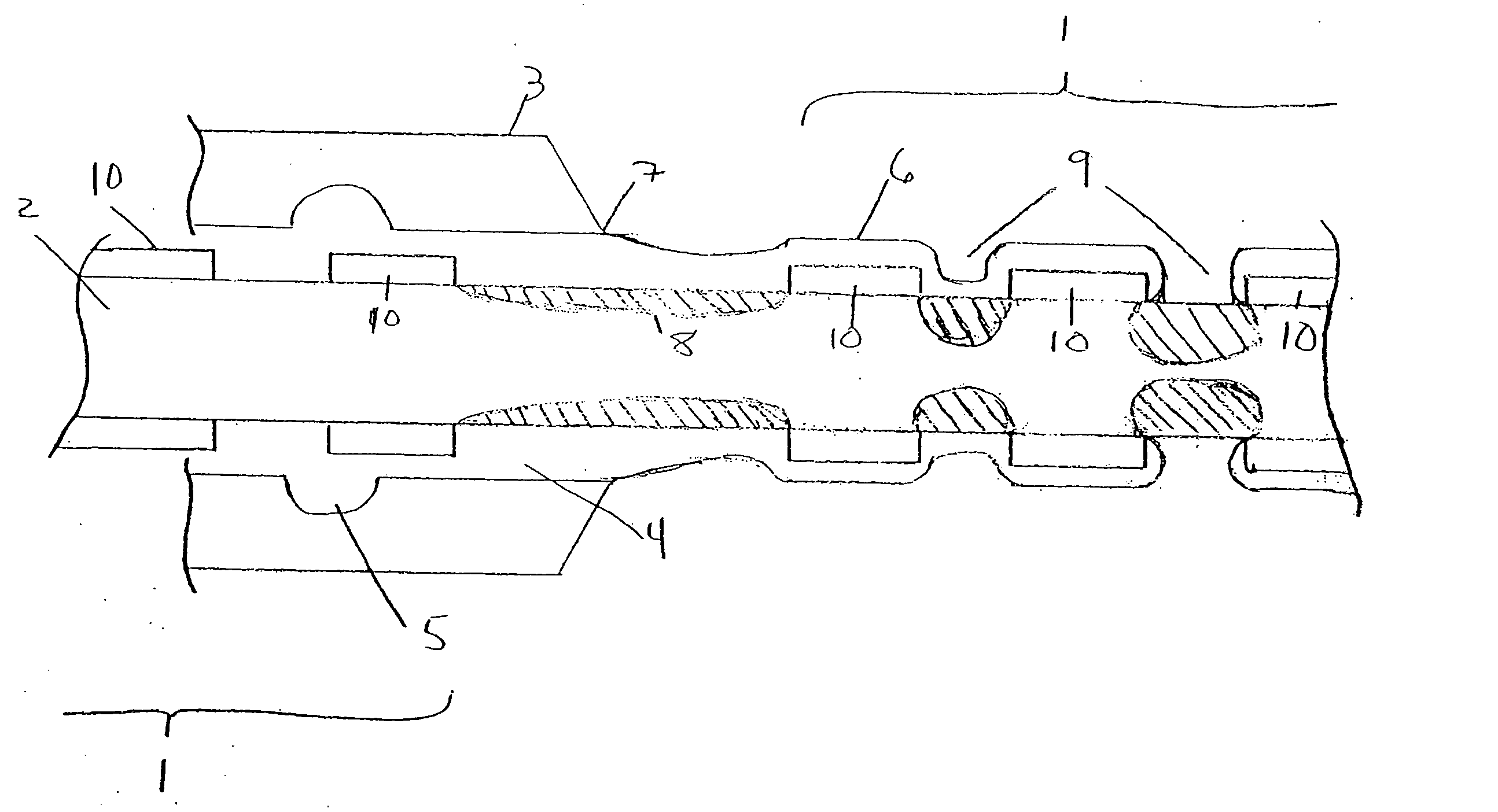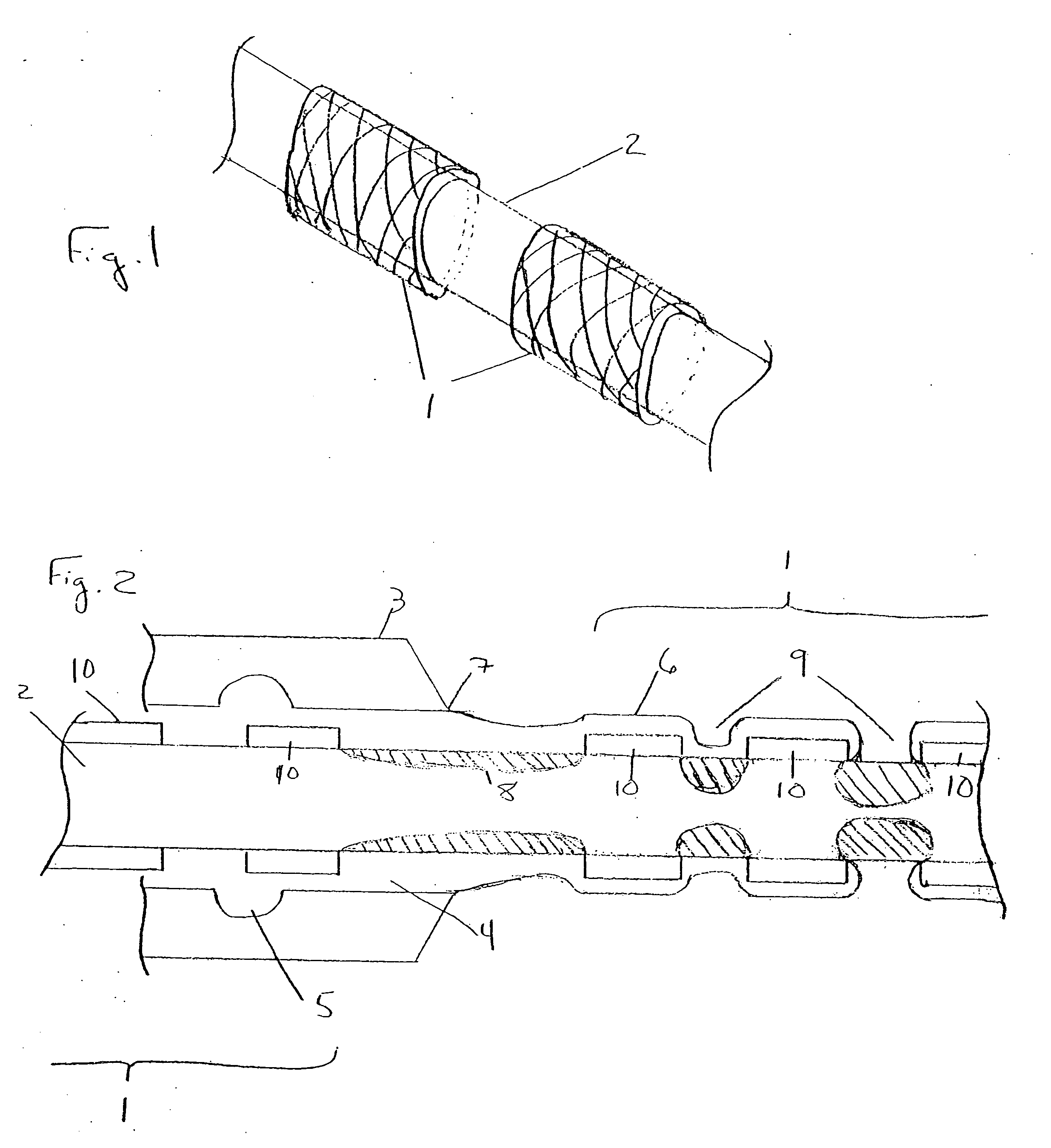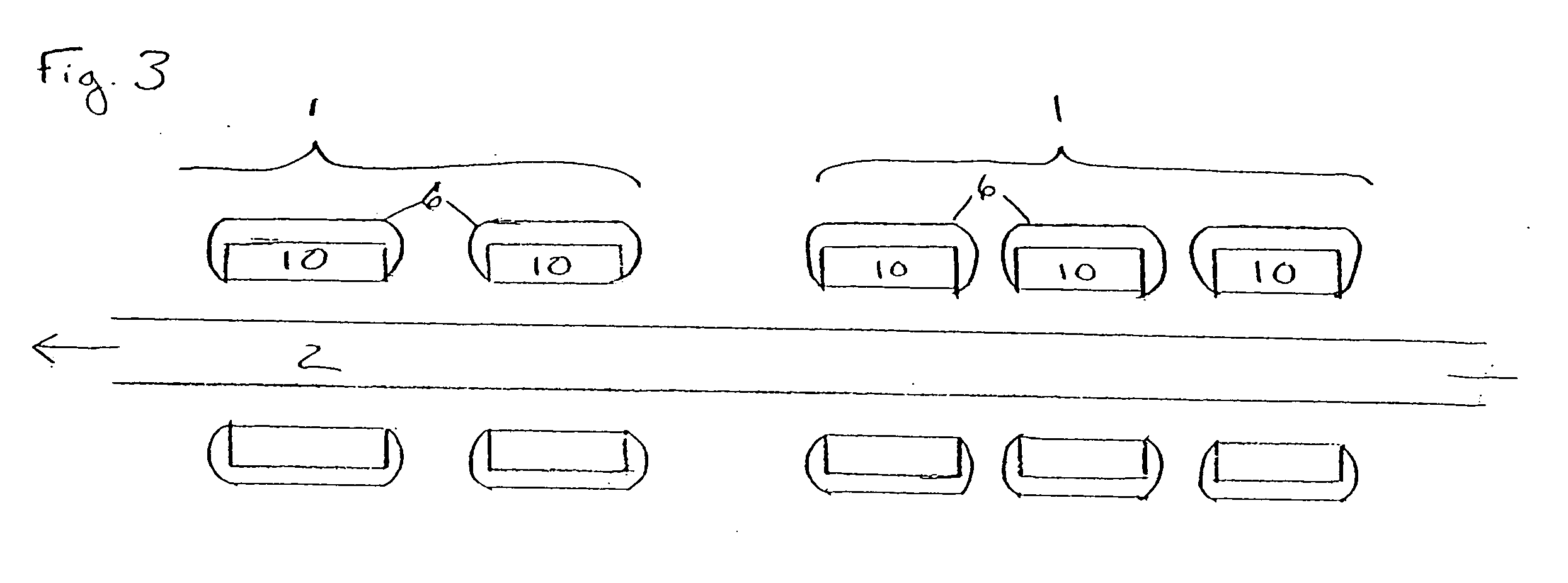Method and system for coating tubular medical devices
a tubular medical device and tubular coating technology, applied in the direction of pharmaceutical containers, packaged goods types, foodstuffs, etc., can solve the problems of inability to administer the therapeutic to the target site in a uniform and homogenous manner, inability to achieve the effect of high production rate and high quality
- Summary
- Abstract
- Description
- Claims
- Application Information
AI Technical Summary
Benefits of technology
Problems solved by technology
Method used
Image
Examples
Embodiment Construction
[0017]FIG. 1 illustrates a plurality of tubular medical devices (in this embodiment, a plurality of stents 1) which are to receive a coating of a therapeutic material, where the stents 1 have been placed on core 2. Stents 1 are generally cylindrical in shape, and may be in the form of a lattice of a material such as stainless steel, Tantalum, Platinum or Nitinol alloys. A lattice configuration permits stents 1 to radially expand (as during implantation in a patient) or to radially contract (as when the stent is crimped, for example, onto a balloon catheter prior to delivery into a patient's body). The ability of stents 1 to be radially compressed permits adjustment of their inner diameters during placement onto core 2, if necessary, to ensure sufficient frictional engagement between the stents and the core in order to minimize the potential for undesired stent movement along core 2. For example, once stents 1 have been loaded onto core 2, their inner diameter may be reduced by mecha...
PUM
| Property | Measurement | Unit |
|---|---|---|
| outer diameter | aaaaa | aaaaa |
| viscosity | aaaaa | aaaaa |
| outer diameter | aaaaa | aaaaa |
Abstract
Description
Claims
Application Information
 Login to View More
Login to View More - R&D
- Intellectual Property
- Life Sciences
- Materials
- Tech Scout
- Unparalleled Data Quality
- Higher Quality Content
- 60% Fewer Hallucinations
Browse by: Latest US Patents, China's latest patents, Technical Efficacy Thesaurus, Application Domain, Technology Topic, Popular Technical Reports.
© 2025 PatSnap. All rights reserved.Legal|Privacy policy|Modern Slavery Act Transparency Statement|Sitemap|About US| Contact US: help@patsnap.com



